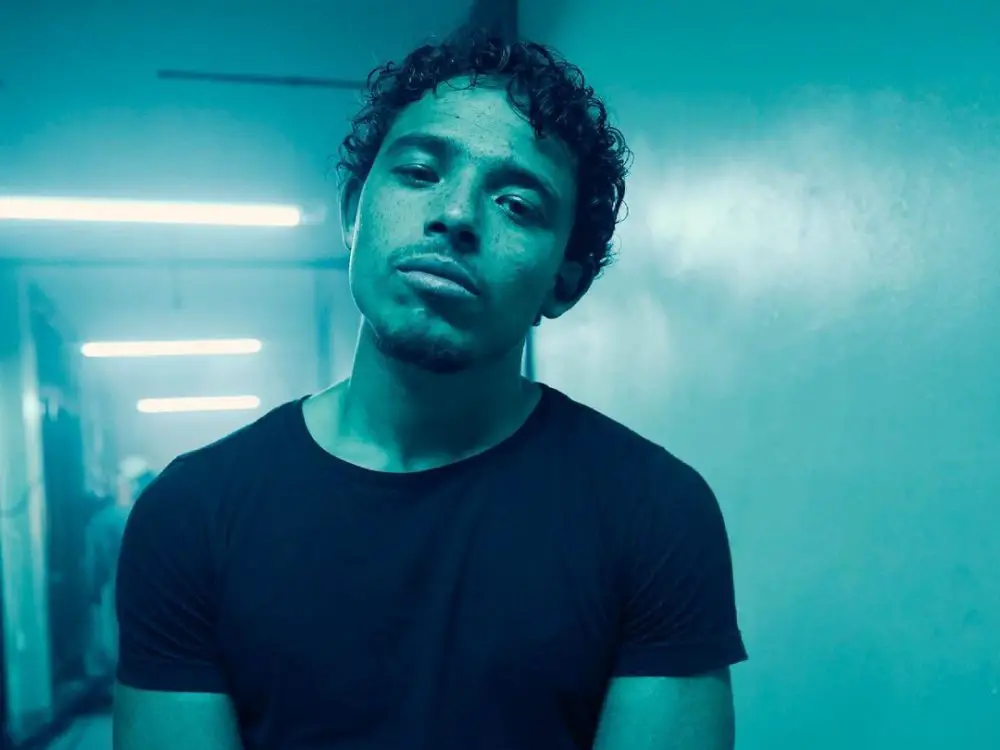The Broadway hit “Hamilton” catapulted the careers of its cast of triple threats into stardom. But none have taken advantage of their platform as much as Anthony Ramos, who played John Laurens and Philip Hamilton in the 2016 musical. The Brooklyn-based performer has appeared in many TV shows and movies, most recently starring in the 2021 film “In the Heights.”
What casual “Hamilton” fans may not know, however, is that Ramos is also a successful recording artist. His first studio album, “The Good & the Bad,” was released in October of 2019 to a positive reception. The R&B album even reached No. 21 on the Billboard Album Charts, an excellent performance for his first release.
Ramos released his second album, “Love and Lies,” in June 2021, capitalizing on the recent buzz surrounding his performance in “In the Heights.” Ramos reaches out to a broad range of inspirations on this album, often blurring the lines between R&B tunes, pop melodies, Latin sounds and Afro beats.
What stands out most in Ramos’ solo works, though, is his clear focus on storytelling. Both of his albums function as anthology works; each song tells its own story through its lyrics and music video. Most of these stories, particularly in “The Good & the Bad,” are pulled from Ramos’ previous romantic experiences.
Ramos doesn’t perform traditional love songs or angsty “Romeo and Juliet”-esque stories; he offers something in between. Each of his songs describes the duality of relationships. There are two opposing ideas, which Ramos and his leading ladies battle with in his lyrics and music videos in both “The Good & the Bad” and “Love and Lies.”
“Relationship”
Ramos first gained attention for his power to create three-minute movies with his song “Relationship” from “The Good & the Bad.” In it, he presents a question: “Have you ever been in a situation where you’re talking on the phone with someone every day, hanging out all the time, going on dates, and then one person gets bold and pops the question: ‘Are we a thing?’ and the other person says that they’re not ready?”
This sort of relationship can take both people on a rollercoaster of emotions, which Ramos mirrors lyrically. In each verse, Ramos describes a romantic relationship, then alternates these lines with descriptions of his muse distancing herself. This starts from the first lyrics he sings: “You’re talkin’ to me / like you already own me / then you go and see your friends / and tell them that ‘he just a friend.’”
In the music video for “Relationship,” Ramos approaches the situation by considering the duality of a relationship — public and private. Ramos and YouTuber Liza Koshy star in the video, in which the two portray dancers rehearsing together. Outside of the dance studio, the pair are romantically linked. But when they rehearse, they couldn’t be more emotionally distant, despite the choreography bringing them close together.
“Mind Over Matter”
The second major hit from “The Good & the Bad,” “Mind Over Matter,” fills a gap Ramos saw missing in music today: a song for people in long-term relationships. He says, “It’s a celebration of long-lasting love that I don’t think gets enough love in music.” Throughout the song, he makes a comparison between the physical attraction he finds in short-term flings and the emotional connection he feels in long-term relationships.
When asked about the meaning behind “Mind Over Matter,” Ramos cites his lyrics because the intention is so clear. He says, “’Cause we makin’ love, real love / It’s like a healer, mind over matter.” While a physical attraction is still there, he values the emotional and mental connections that come with long-term relationships more.
Ramos’ music video for “Mind Over Matter” is a fan favorite, mainly because his leading lady is his real-life fiancée and “Hamilton” co-star Jasmine Jones. She was also the inspiration for the song, and the music video portrays a story from their relationship. It presents a duality between what long-term relationships usually include, cooking a meal together, and the physical attraction often representative of short-term flings.
“Blessings”
Ramos describes his single “Blessings” off of “Love and Lies” as one of his favorite songs he’s ever written, and it’s easy to see why. One of Ramos’ few dance tracks, “Blessings” counteracts a popular — and sexist — narrative in music: Men make the decisions in the relationship, and women are passively dragged along for the ride.
In “Blessings,” however, Ramos describes meeting a powerful woman who “blesses” him with her consideration. He describes her entering a party and giving him attention while emphasizing that he doesn’t understand why. For example, he says, “I pick up that she got her eyes on me / I don’t know why.” His leading lady is the active agent in their relationship.
In the music video, “So You Think You Can Dance” finalist Genessy Castillo portrays Ramos’ love interest. While Ramos has admitted that the “Blessings” video was less focused on narrative and more focused on bringing joy to a post-COVID world, the video still tells a simple story. Castillo is the center of the party, and Ramos receives her attention.
“Say Less”
“Say Less,” Ramos’ calm, ethereal song from “Love and Lies,” discusses the contrast between closeness and distance. It gives his take on a long-distance relationship; he knows the distance between them will eventually hurt them, but feels that the closeness in the relationship is worth it. Like many of his songs, this is an autobiographical story for Ramos. He says, “Everyone at one point in time has had that person.”
Ramos’ lyrics in “Say Less” tell of a visit to his love interest in another city while refusing to acknowledge the issues in their relationship. He’s there to “numb the pain,” not solve the problem. Ramos has decided that the closeness the relationship provides is more valuable than talking about the distance between them — hence the title.
This story is told visually in the music video, as Ramos and his “In the Heights” co-star Melissa Barrera drive on a never-ending highway. This represents the traveling the couple does to keep their relationship afloat. The car in the video originates from the lyrics: “Red lights I’m running through / rushing to get to you.” In the end, however, the couple crashes into a stairway, evoking the end of their relationship.
Conclusion
Overall, Ramos’ anthology of love stories does two things in both “The Good & the Bad” and “Love and Lies.” First, Ramos is part of the movement toward diversity in entertainment today. Many contemporary music videos feature white leading performers telling love stories. Ramos flips this script by featuring influential women of color in his works. Second, they offer stories and songs that people can relate to. Some artists sing about things the average person can’t connect with, like riches or fame, but Ramos’ music is relatable to anyone with a heart and the people they love.

















